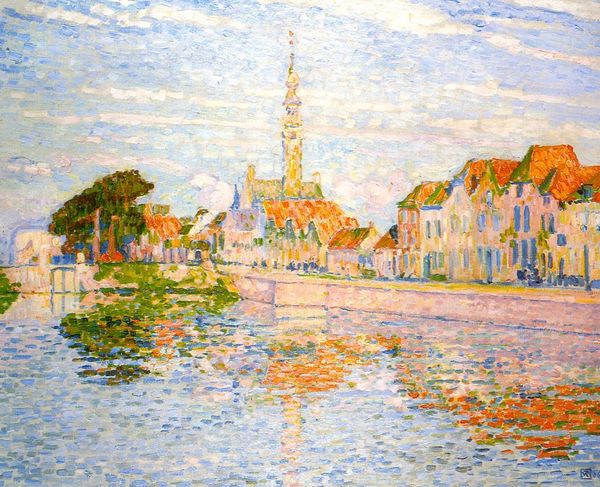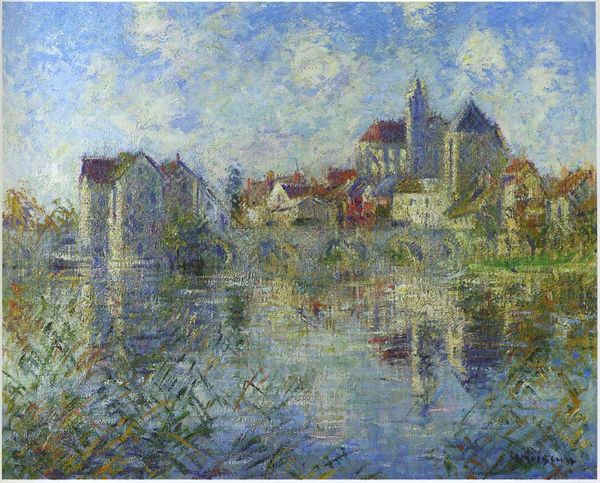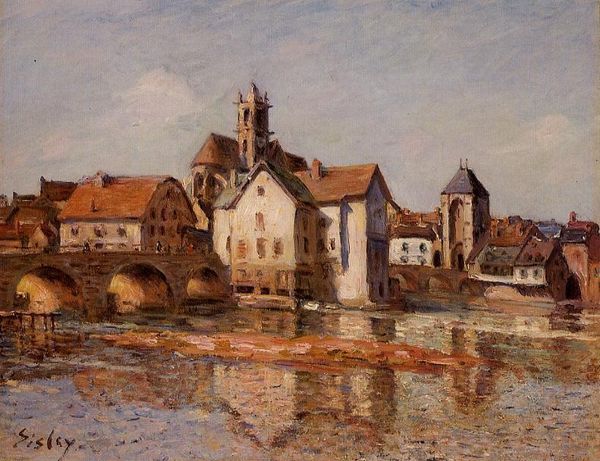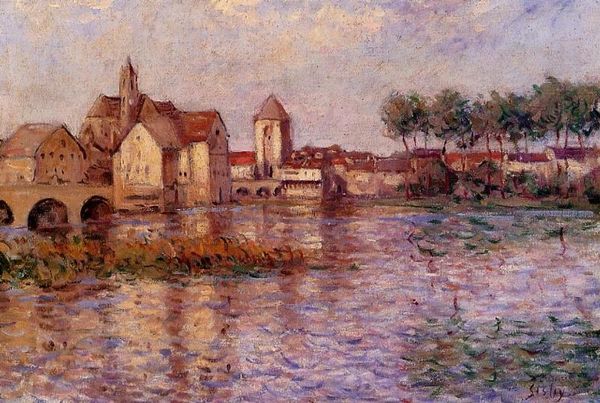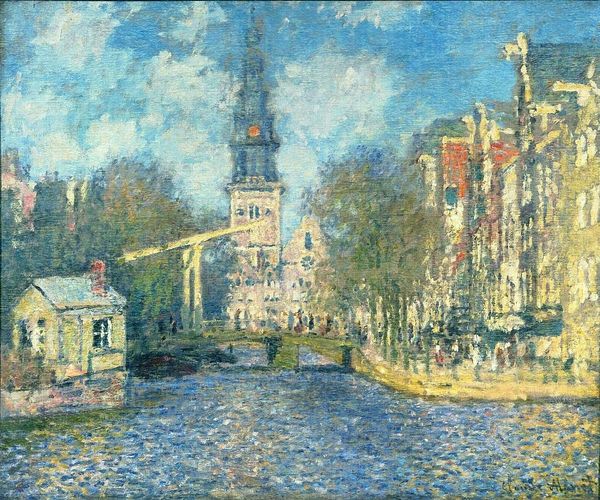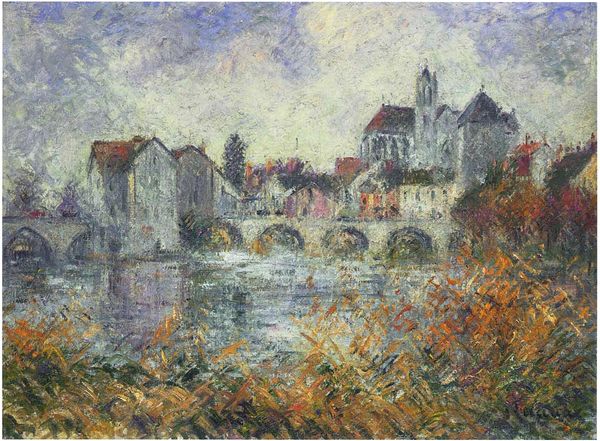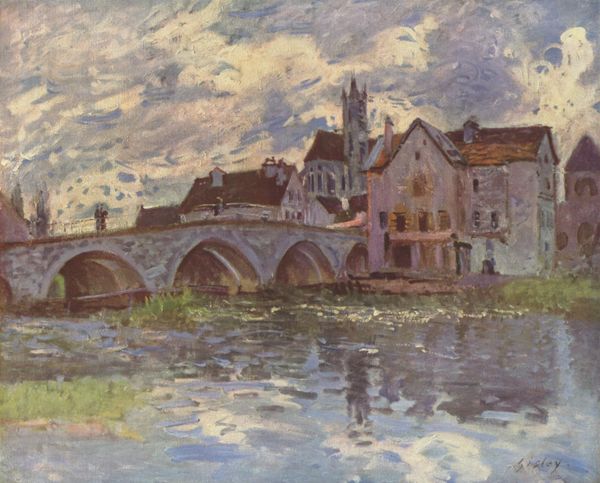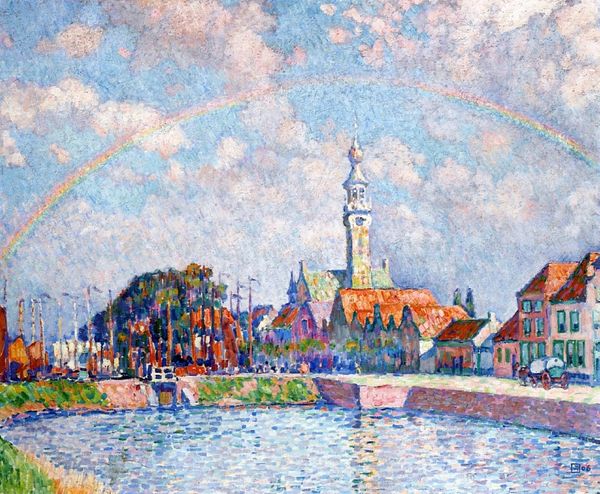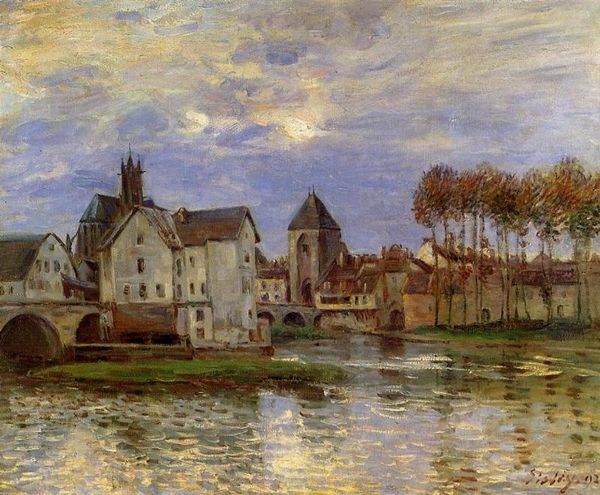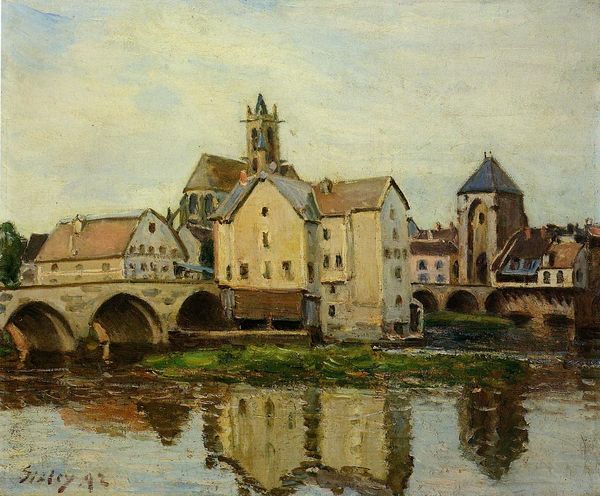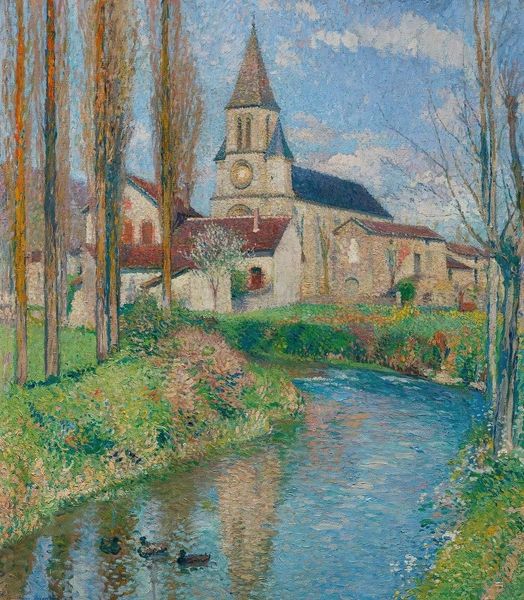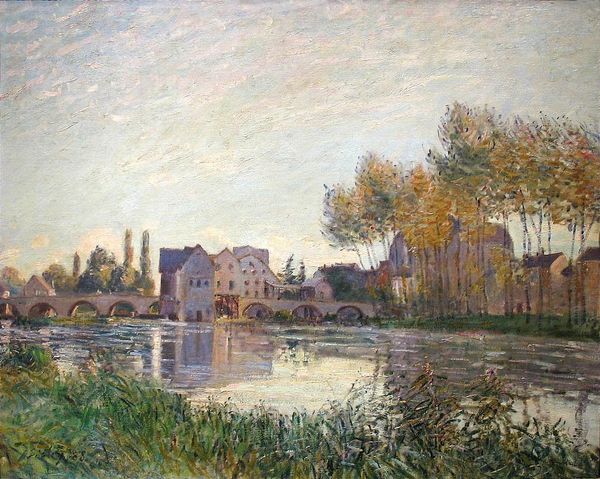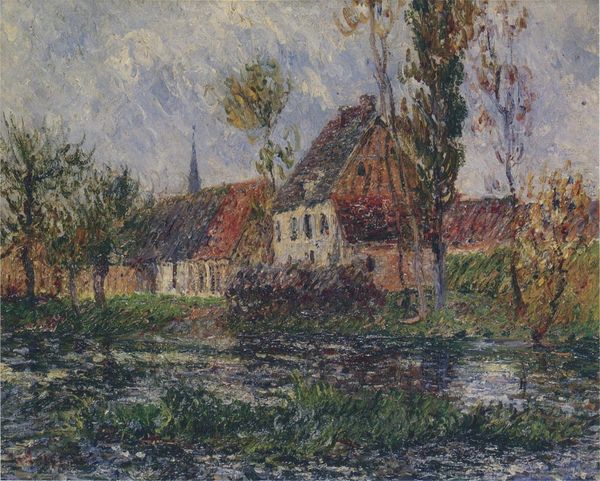
Copyright: Public domain
Editor: Here we have Maxime Maufra’s "The Leguenay Bridge," painted in 1894 using oil on canvas. I find its subdued colors and gentle brushstrokes quite calming, even though it depicts a bustling cityscape. What stands out to you in this piece? Curator: I see a quiet commentary on the rapid urbanization happening at the turn of the century. While Impressionism often celebrated fleeting moments of beauty, Maufra also acknowledges the transformation of the landscape itself. Consider how the bridge, a symbol of connection and progress, dominates the foreground, yet the older, traditional buildings with their distinct roofs huddle behind. Do you think this tension is intentional? Editor: It hadn't occurred to me, but the contrast is definitely there. The bridge almost seems to be eclipsing the architecture behind it. I suppose the reflection of the buildings is less clear in the water as compared to the solid structure of the bridge. Curator: Exactly! Maufra was deeply engaged with the social and political issues of his time. This wasn't just a pretty picture; it was a statement. The blurring of those buildings could symbolize the erasure of the old ways by the new. Can we even say that by emphasizing the bridge, it is almost imposing upon its location? Editor: I didn't expect an Impressionist painting to be so...political. Curator: It’s a reminder that art is never created in a vacuum. Even depictions of light and shadow can be imbued with meaning when viewed through a critical lens. This particular one resonates deeply when reflecting upon the swift socio-cultural changes of the time. Editor: Thanks, that's really opened my eyes to a whole new way of seeing Impressionism. Now I want to dive more into his context.
Comments
No comments
Be the first to comment and join the conversation on the ultimate creative platform.
